© ROOT-NATION.com - Use of content is permitted with a backlink.
CV90 is a family of highly tactical armored combat vehicles developed by BAE Systems.
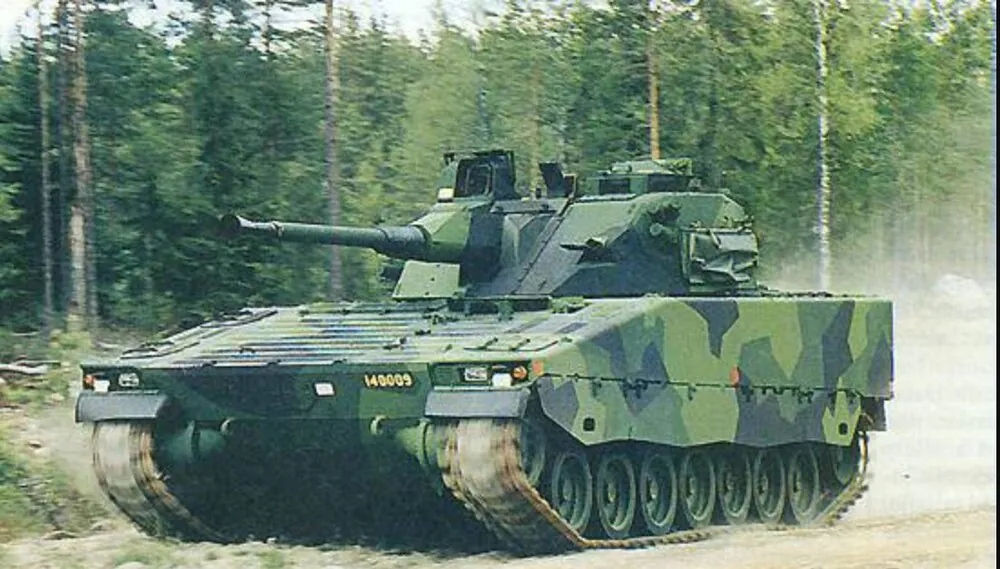
It has become known that Sweden provided Ukraine with about 50 CV90 infantry fighting vehicles, Archer self-propelled artillery systems, and NLAW anti-tank systems. This was announced by the country’s Defense Minister Paul Johnson. He noted that training of Ukrainian soldiers on these systems should take place within a few months.
“The expected effect of this package is to better arm Ukraine for ground combat. These platforms are designed for ground combat,” the minister said.
That is why today we decided to pay special attention to the CV90 armored fighting vehicles developed by BAE Systems.
Read also: Weapon of Ukrainian Victory: German Self-Propelled Howitzer Boxer RCH 155
Interesting facts about the creation of the CV90 infantry fighting vehicle
In the early eighties, the Swedish military began looking for a replacement for the Pbv 302 armored personnel carriers. The armored vehicles, which were good in their time, had been in service for almost twenty years and were already somewhat outdated. Initially, the Swedish Ministry of Defense planned to buy something foreign. Therefore, several vehicles of a similar class were ordered from the UK, which, however, differed in purpose. Take the Scorpion, for example – in the English classification, it was listed as a light tank. It is unlikely that such a vehicle can be made a successor to the old armored personnel carrier. Nevertheless, the ordered vehicles were tested at the test site in 1984 and the Swedish military made a number of conclusions. But there were no large-scale purchases of British equipment: the Swedes decided to make a new armored vehicle for infantry on their own, albeit with the benefit of foreign experience. This decision was fully in line with the principle of independence in the defense industry, which was adhered to in Sweden at the time. Thus began the history of the family of armored vehicles known as Strf 90 or CV-90.
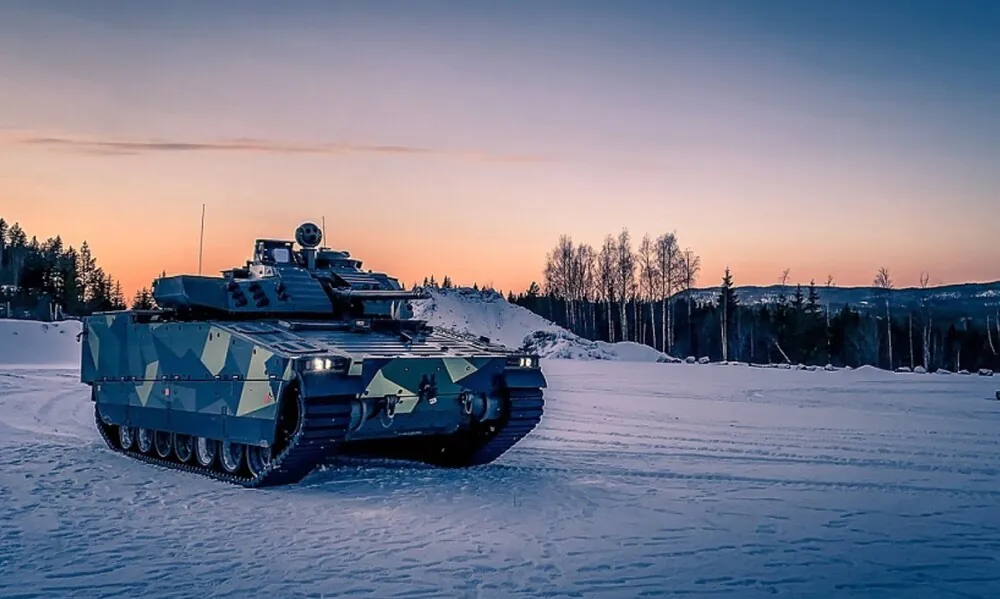
Utveckling AB was commissioned to design the new vehicle. Based on the results of testing imported vehicles, the Swedish military came to the conclusion that it was necessary to revise its requirements. First of all, instead of an armored personnel carrier, they wanted an armored personnel carrier with the ability to create other types of armored vehicles on its basis. In accordance with the Swedish approach to armored vehicle design, Utveckling AB entered into contracts with other companies. Thus, Bofors was commissioned to create a turret and a full range of weapons, and Hägglunds was appointed responsible for the chassis. Thus, Utveckling AB was left with the overall coordination of the project and the production of a test batch of five vehicles.
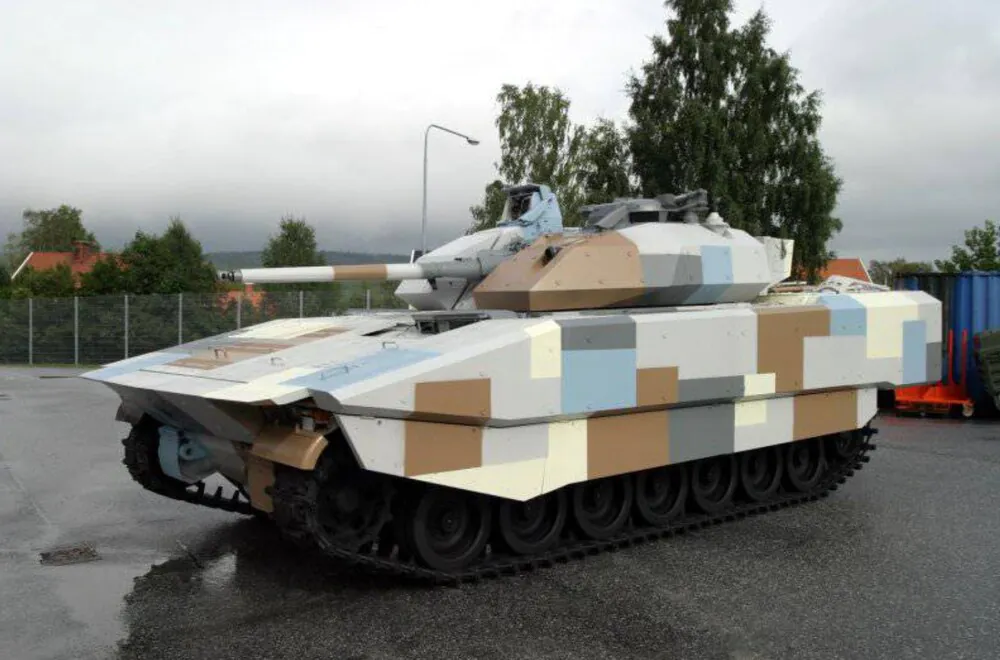
The requirements to ensure that several machines can be built on a single basis were reflected in the development of the chassis. It was necessary for the equipment to meet the new requirements, and at the same time, it was necessary to maintain an acceptable cost of the finished machine. Therefore, some of the units were borrowed from machines already in production at the time. The design of all Strf 90 family vehicles has the same layout and is based on the classic infantry fighting vehicle scheme. The engine and transmission compartment is located in the front of the vehicle on the right side. The driver’s workstation is located on the left side of the interior, respectively. The combat compartment with the turret mounted on it is located in the middle part of the armored vehicle, and the aft part is given over to the landing platforms.
Read also: Weapons of Ukrainian Victory: German Gepard Self-Propelled AA Gun
Variants of the CV90
The CV90 family also includes the CV9040 version with a 40-mm cannon and the CV9030 export version with a 30-mm cannon. The CV9040 has been in service with the Swedish army since 1993, with nearly 500 vehicles produced, armed with the Bofors L/70 40mm cannon. Deliveries were completed in September 2002. The sighting systems of several Swedish CV9040 vehicles have been upgraded with the LIRC thermal imaging system from FLIR Systems (Portland, Oregon). LIRC is based on QWIP (quantum well infrared photodetector) technology.

BAE Systems has developed several export versions of the CV90 for international customers. In July 2010, the company introduced a new variant of the CV90 called the Armadillo. Another variant, the CV90 MkIV, with a significant upgrade in capabilities was launched in January 2018. This vehicle uses the most advanced ADAPTIV technology, which improves stealth and survivability, making the vehicle invisible to enemy surveillance units.
Ukraine is likely to receive the CV9040 version with a 40-mm cannon, as it is the one currently in service with the Swedish army.
The CV-9040 was the first vehicle of the Strf 90 family. The prototype with a turret equipped with a 40-mm cannon was designated Pbv G. The next armored vehicle with the Pbv L index had similar armament, but the weapon control system was somewhat simplified. In addition, it was planned to develop a vehicle with a 25-mm cannon, an anti-aircraft self-propelled gun, etc.
As a result, the following armored vehicle modifications were created:
- CV-9040. Infantry fighting vehicle with 40-mm L-70 cannon

- CV-9030. Export version of the previous vehicle, which is equipped with a 30-mm Bushmaster II gun
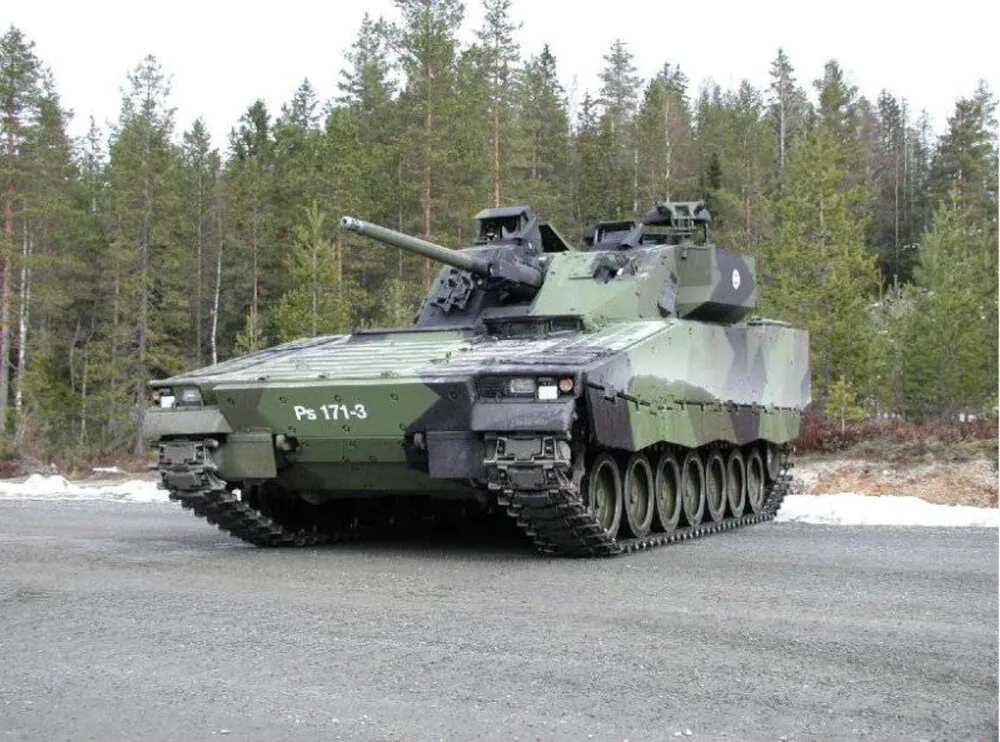
- CV-9035. Another export version armed with a 35 mm Bushmaster III cannon
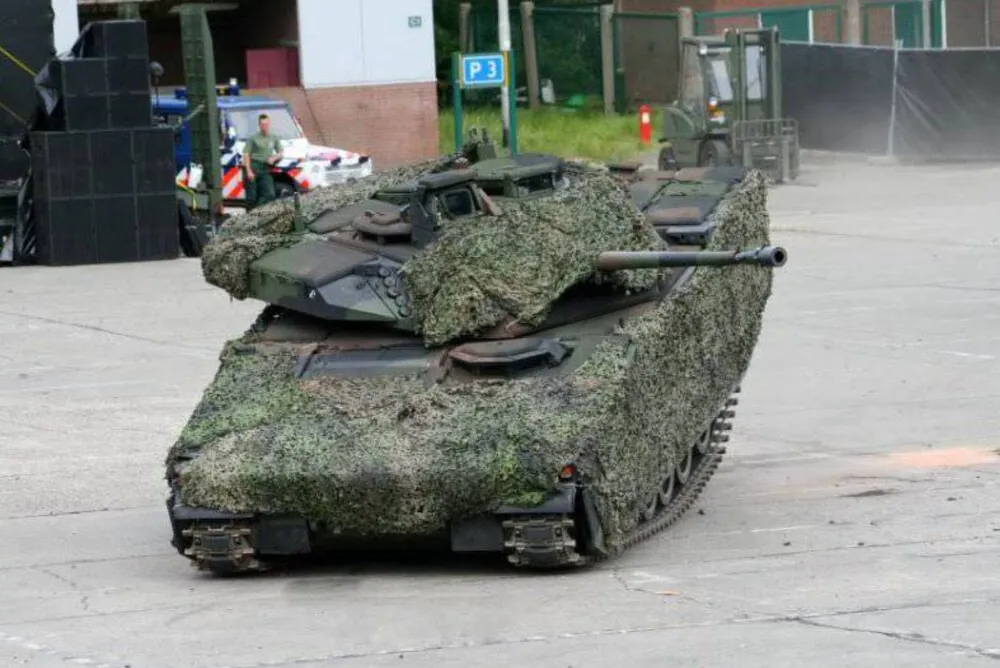
- CV-90FOV. Reconnaissance vehicle for artillery observers
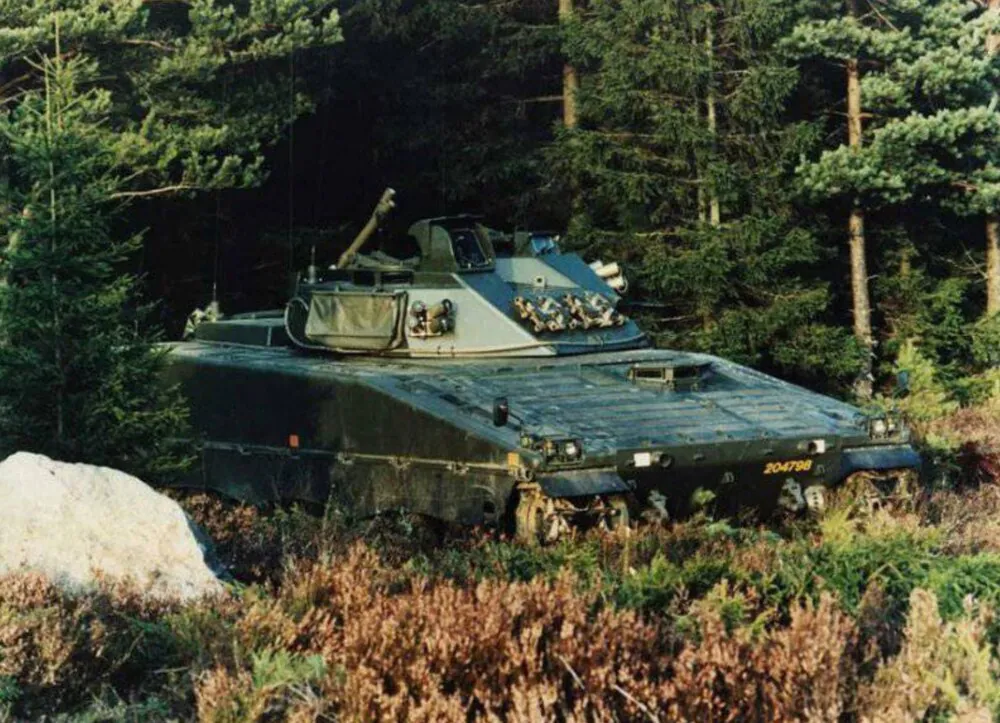
- CV-90FCV. Command and control vehicle with a modified landing gear and additional communications equipment
- CV-90ARV. Repair and recovery vehicle
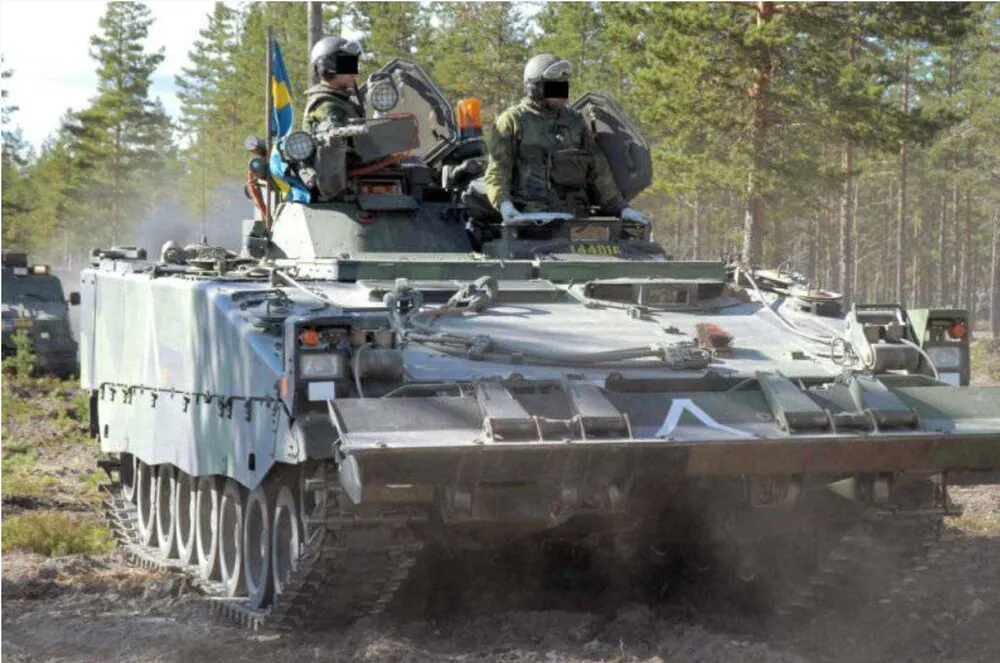
- CV-90AMOS. Self-propelled rapid-fire mortar. Two 120-mm barrels with automatic loading devices are located in the turret
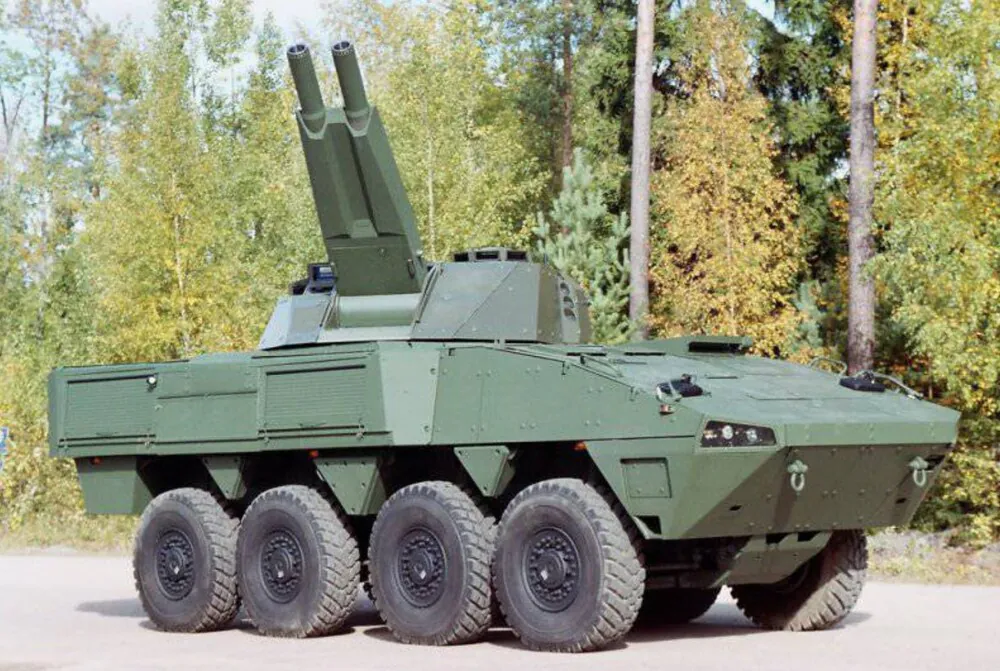
- CV90120-T. The main reason for installing a 120 mm gun on the CV90 was to combine the firepower of a tank with the mobility of a lighter vehicle. The combat weight of the CV90120-T is about 35 tons, while the tank weighs almost twice as much.
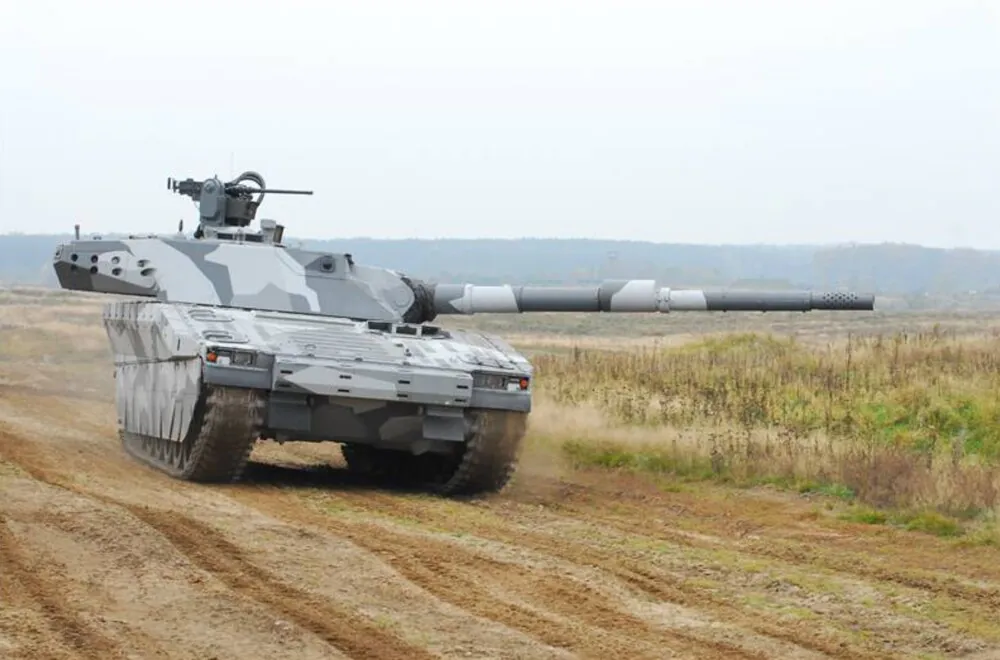
Read also: Weapons of Ukrainian Victory: Iris-T SLM for Ukraine from Germany
Engine and driving characteristics of the CV-90 infantry fighting vehicle
The powerplant of the Strf 90 armored vehicles is based on a 14-cylinder Saab Scania DS14 diesel engine with an output of 550 hp. The transmission is mounted in a single unit with the engine.

Assembled in Sweden under an English license, the X300-5 is equipped with an automatic planetary gearbox, a differential mechanism with hydrostatic transmission and two final drives. The machine is controlled by a steering wheel, gear lever and pedals.

Thanks to the X300-5 transmission, the Strf 90 family machines have good maneuverability and are capable of making turns with an arbitrary radius. Equipped with the DS-14 engine, the vehicles of the family have a specific power output of 20-25 hp per ton. At the same time, Strf 90 armored vehicles can accelerate to a speed of 70 km/h on the highway. In reverse, it reaches 40-43 km/h.
Read also: Weapons of Ukrainian Victory: Aspide Anti-Aircraft Missile System
Reliable protection of the hull and crew of the CV-90 infantry fighting vehicle
The chassis and turret of the vehicles in the family are protected by multi-layer armor. Its design is interesting: the main body is welded from rolled steel sheets, then additional composite sheets are mounted on it. In addition, additional modular armor can be installed on top of the composite modules.
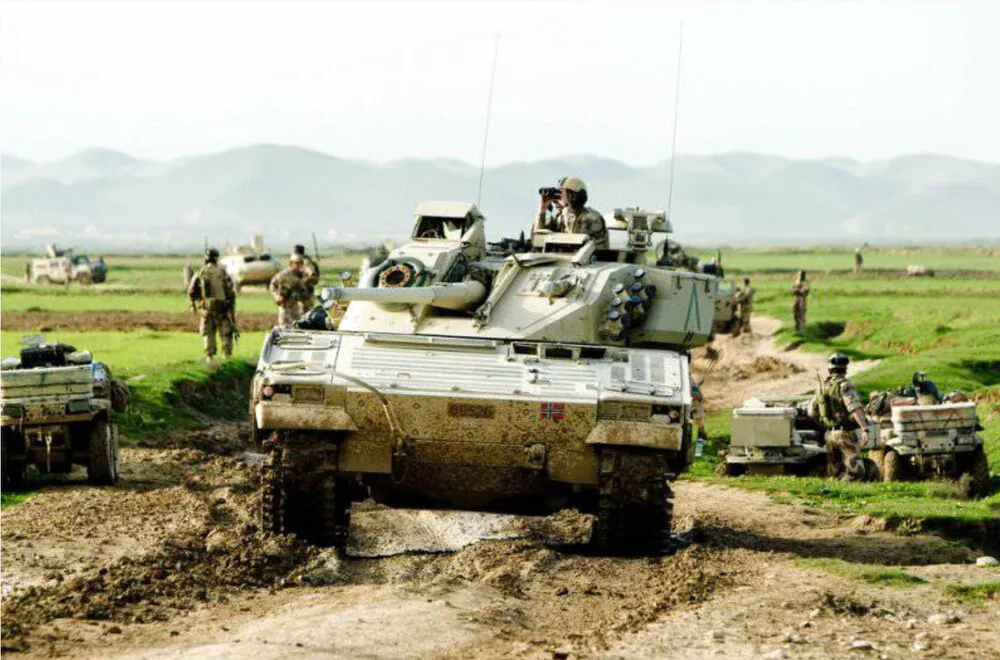
Sweden uses German-made AMAP modules on its vehicles, Norway and Denmark use MEXAS, and the Netherlands uses the RUAG system. With the additional armor installed, Strf 90 vehicles can withstand a 30-mm shell hit from all directions. The frontal projection has a slightly higher level of protection. It should also be noted that the front armor plates are mounted at a certain angle, so Swedish engineers were able to slightly improve protection without increasing weight.
Read also: Weapons of Ukrainian Victory: NASAMS air defense that protects Washington
Armament of the CV-90 infantry fighting vehicle
The armament of the Strf 90 depends on the specific modification. For example, the CV-9040 basic infantry fighting vehicle is equipped with a turret with a 40mm Bofors L70B automatic cannon. It was created on the basis of a towed anti-aircraft weapon and modified for installation in the turret of an infantry fighting vehicle. In the original anti-aircraft version, shells are fed into the gun from above, and there is a fired shell ejection window at the bottom. For use on an infantry fighting vehicle, the gun was rotated around its axis. This made it possible to install the projectile feed mechanism under the gun, and to bring the ejection of the shells to the turret.
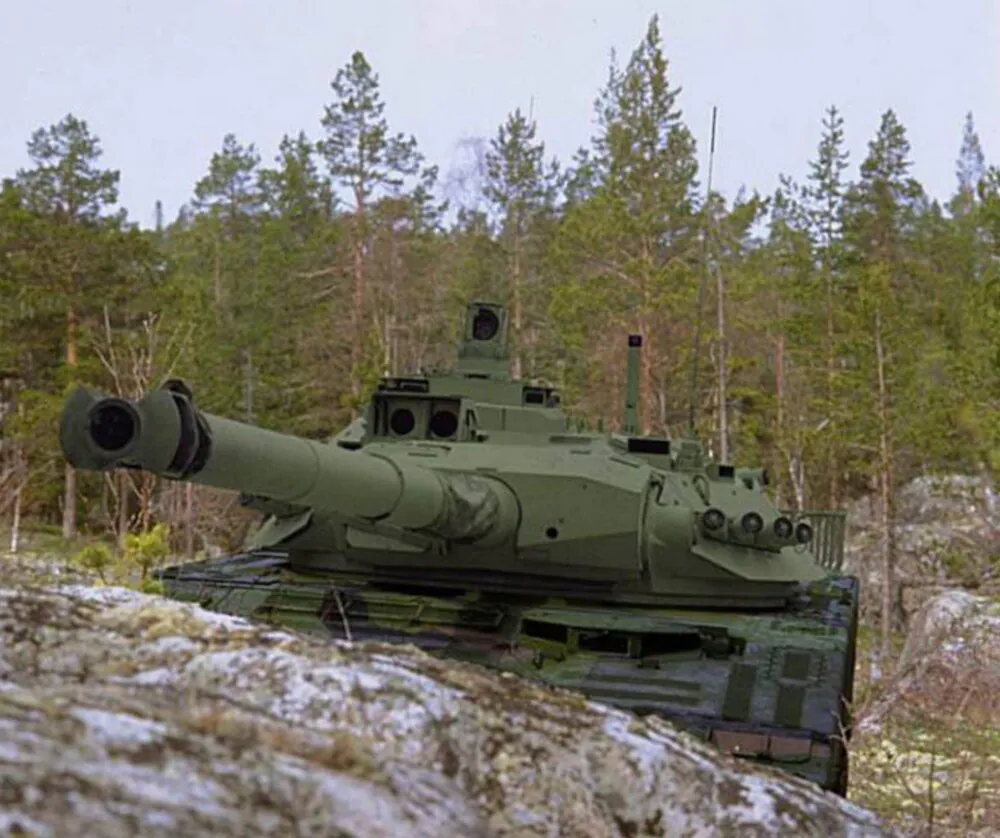
Under the L70V breech is a 24-round box magazine. The shells are located in its three compartments, each of which can hold eight shells of different types. It is possible to quickly change the type of projectile fed into the gun – for this purpose, the magazine is equipped with a hydraulic drive. The weapon’s automation allows it to fire either single bursts or short or long bursts. It is also possible to adjust the rate of fire from 60 to 400 rounds per minute. The length of the queue is limited only by the magazine capacity. After the last one is used up, the BMP crew must manually reload it. A stock of 216 shells is placed in the combat compartment: 48 in a mechanized drum and 168 in special stacks. It takes about 20-25 seconds to load one magazine compartment. Several new types of shells have been developed specifically for the Bofors L70B gun: armor-piercing sub-caliber, high-explosive fragmentation with a programmable fuze, general-purpose tracer, and others. The characteristics of the shells allow them to hit almost all types of armored vehicles in the world at a range of up to a kilometer, with the exception of tanks. The gun is guided horizontally by turning the turret. Vertical guidance is accomplished by an electro-hydraulic system, with an angle of -8° to +50°. It is noteworthy that the dimensions of the gun breech and the volume of the combat compartment allow the barrel to be raised higher, but this option was abandoned to improve the ergonomics of the combat compartment. And the defense against low-flying enemy airplanes and helicopters was planned to be entrusted to another vehicle of the Strf 90 family.
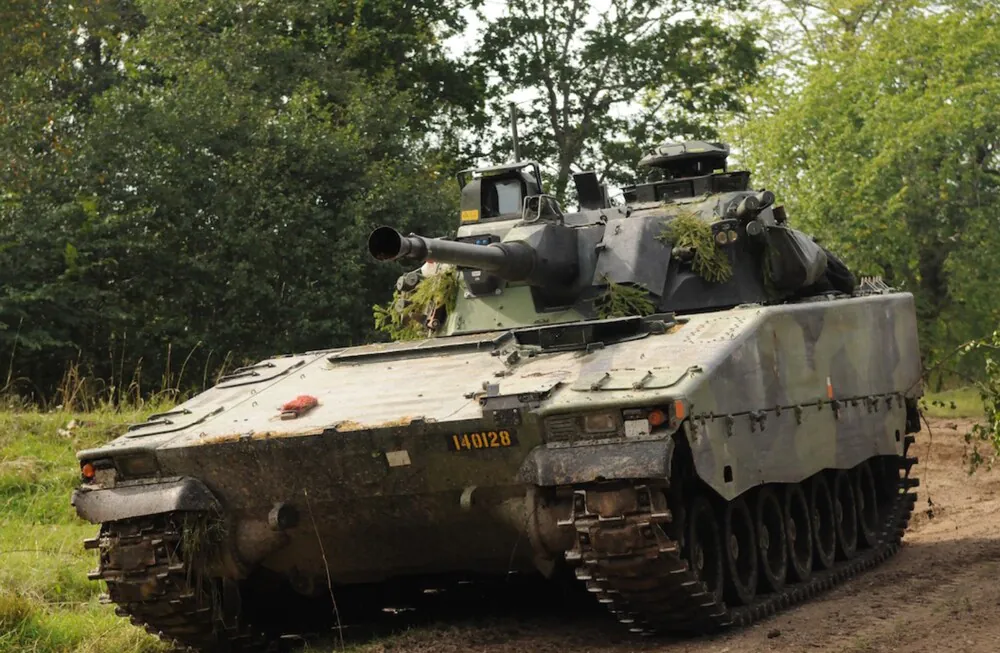
Additional armament consists of a 7.62mm machine gun, paired with a cannon, with a 2000-round ammunition capacity, and smoke grenade launchers. In addition, the crews of some CV-9040 BMPs are equipped with RBS-56 Bill anti-missile systems, which can be used either from the turret hatch or from the ground. There is no possibility of installing ATGMs on the vehicle itself.
Read also: Weapons of Ukrainian victory: French Crotale SAM
Weapons management
The weapon is controlled by a single system that includes a number of components. For example, the Simag LV-401 laser rangefinder can measure distances between 200 and 9990 meters with an accuracy of ten meters. The commander has a Sopelem M371 periscopic sight at his disposal. The data from the rangefinder and the sight are fed into the MYBOF ballistic computer. This device provides the necessary data to the weapon guidance system in a semi-automatic mode. The calculation takes into account such parameters as wind speed (five options: calm, weak and strong winds from both sides), air temperature (from -50°C to +70°C) and ammunition temperature (from -35°C to +45°C).
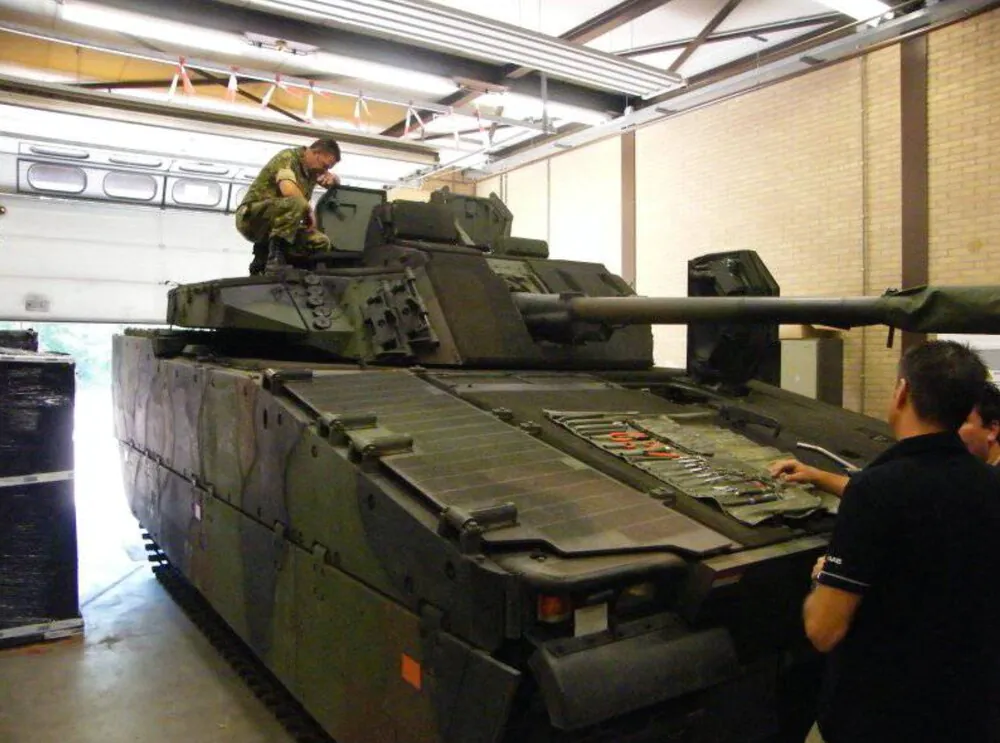
Of particular interest are the fire controls. This is a kind of joystick that can be used to control all the necessary parameters. The inclination of the handle in the vertical planes is responsible for the turret rotation and the gun elevation angle. The angle of the handle affects the speed of rotation or elevation. On the top of the joystick, under the thumb, there are buttons for selecting a weapon (cannon or machine gun), and the shot is fired with the trigger under the index finger. Such joysticks are available at the commander’s and gunner’s workstations. When these crew members try to perform any actions at the same time, the automation does not miss the gunner’s commands. The gunner has an NTTA periscopic sight, a rangefinder and optical periscopes pointing in different directions. In addition, the gunner has an additional control knob, which is used to turn the laser rangefinder on and off, as well as some other actions.
Read also: “Neptunes” knocked out “Moskva” cruiser: All about these anti-ship cruise missiles
CV-9040 infantry fighting vehicle crew and troops
In addition to three crew members, the CV-9040 can carry eight paratroopers. Landing and disembarkation of troops takes place through a door in the stern. Additional hatches are provided on the roof and in the bottom of the landing compartment. Eight soldiers are seated on folding seats of a simple design, which are located along the sides of the hull.
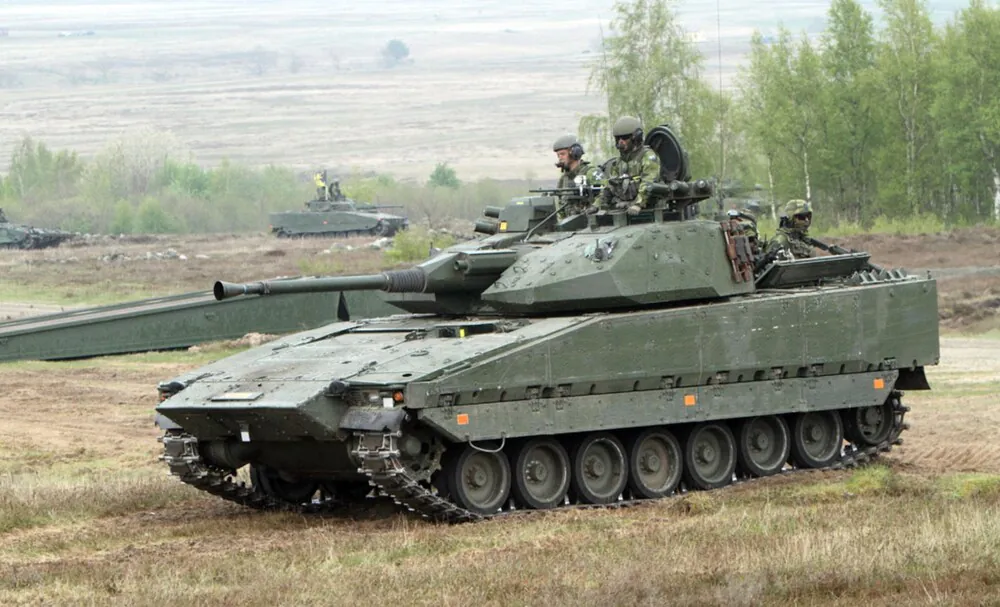
At the early stages of the vehicle’s development, the possibility of installing seats in the middle part of the compartment was considered, but later this option was abandoned due to a number of disadvantages typical of such an arrangement. There are optical devices on the roof and in the doors of the landing compartment to monitor the environment.
Read also: All about the General Atomics MQ-9 Reaper
Technical characteristics of the CV-9040 infantry fighting vehicle
- Dimensions: length 6.47 m; width 3.19 m; height 2.5 m
- Armor: standard spaced multi-layer armor. Protection against RPGs, 30mm APDS armor-piercing sub-caliber rounds and 155mm shell fragments
- Armament: 40 mm Bofors L70B automatic cannon, 7.62 mm twin machine gun. There are variants with RBS-56 Bill anti-missile systems
- Weight: in combat condition 22.8 tons
- Top speed: 70 km/h
- Operational range: 500 km
- Capacity: 3 crew members + 8 special forces soldiers
- Additional equipment: Simag LV-401 laser rangefinder, CBRN protection system, night vision thermal imagers, Sopelem M371 periscopic sights.
It is now known that about 50 fast infantry fighting vehicles will soon be helping the Ukrainian military destroy the enemy at the front. I am sure that such a reliable and protected infantry fighting vehicle is very necessary for our defenders. That is why we are sincerely grateful to our Western partners for their support and supply of modern weapons.
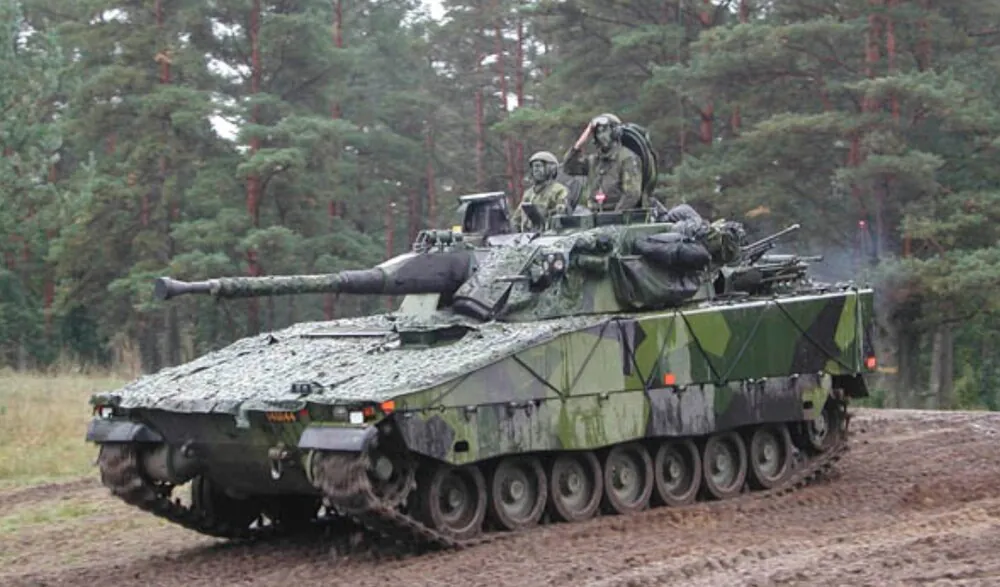
We believe in our defenders. The invaders will not escape from retribution. Death to the enemies! Glory to the Armed Forces! Glory to Ukraine!
Read also:
- Silent killers of modern warfare: most dangerous military UAVs
- Weapons of Ukrainian victory: ATGM Stugna-P – Russian tanks are in trouble


Ds14 is not a14 cylinder engine it’s a v8 engine, similar with trucks.